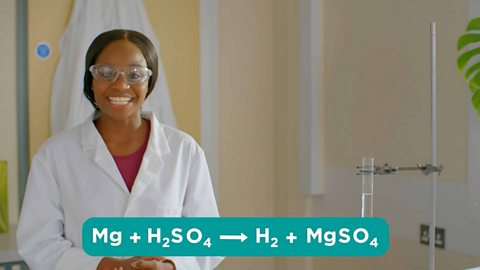Key points
- Oxidation is when a substance reacts and combines with oxygen.
- Combustion (burning) is an example of an oxidation reaction.
What gas is needed for a fuel to burn?
Oxygen.
This is normally from the air but can also be from a specific source. For example, oxygen tanks are used for some space rocket engines.
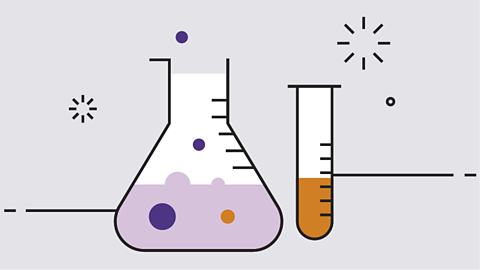
Video
Watch this video to find out about oxidationA type of chemical reaction when a substance reacts with oxygen. reactions.
While you're watching, think about where the oxygen atoms usually come from during this type of type of chemical reactionWhen chemical bonds are broken and made between atoms, so that new substances (compounds or elements) are made..
There’s a particular kind of chemical reaction that’s slowly happening all around us.
It’s called oxidation.
It’s why an apple turns brown after it’s been cut, and why lots of metals react when they’re exposed to the air.
For example, the fresh surface of this sodium metal is combining with the oxygen in the air to make a new compound that contains oxygen: sodium oxide.
We can also see iron wool being oxidised when it’s heated.
This iron wool is perfectly balanced by the modeling clay on the other side of the beam.
When heated, it burns, and the iron combines with oxygen in the air to make iron oxide.
We say the iron has been oxidised.
At the end of the reaction, the oxidised iron product is heavier than the modeling clay because iron oxide has the added mass of the bonded oxygen and iron atoms.
Any time oxygen is bonded to a substance it is called oxidation. But if oxygen is removed from a compound, it’s called a reduction reaction.
Oxidation and reduction are opposite reactions, although getting the oxygen back off this iron oxide would be very difficult!
Why did the mass increase after the iron was burned?
The extra mass came from the oxygen atoms which bonded to the iron atoms.
What is oxidation?
Oxidation is a type of chemical reaction. In an oxidation reaction, an elementA pure substance which is made from only one type of atom. Elements are listed on the periodic table. or compoundA pure substance made from two or more elements which are chemically bonded in a fixed ratio. gains oxygen atomThe smallest particle of an element. We often think of atoms as tiny spheres, but in fact they are made from smaller particles called protons, neutrons and electrons..
Oxidation reactions occur when a substance reacts with the element oxygen to produce an oxideA compound which contains an element bonded to oxygen. .
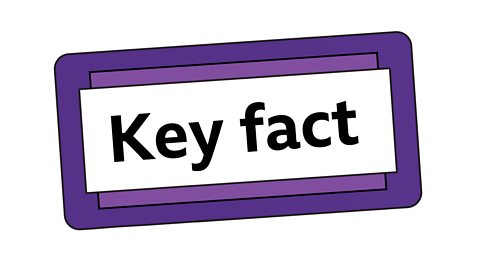
combustionAnother name for burning. When a fuel reacts with oxygen and releases useful energy., or burning, is an example of an oxidation reaction.
This is because a fuel reacts with oxygen to release energy.
Some fuels are hydrocarbonA compound made of hydrogen and carbon atoms only.. When there is plenty of oxygen around, these combust to give carbon dioxide and water (plus energy).
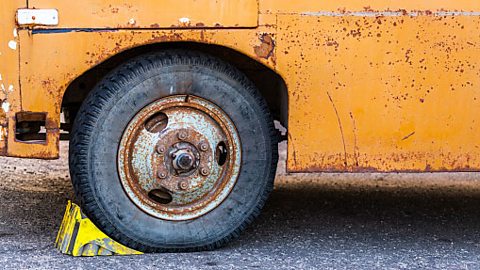
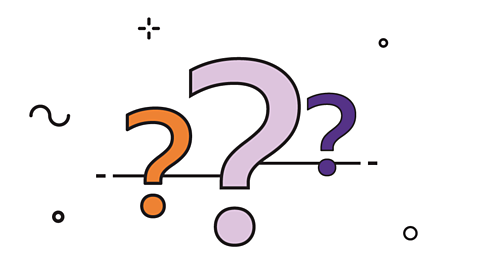
Did you know?
Rusting is another example of an oxidation reaction.
Iron reacts with oxygen in the air and produces iron oxide. Iron oxide is the scientific name for rust!

The word equation for rusting is:
Iron + oxygen → iron oxide
Which element is involved in all oxidation reactions?
Oxygen.

Writing equations for oxidation reactions
Oxidation reactions involve a substance reacting with oxygen, which produces an oxide. This means they have oxygen as one of their reactantThe chemical present at the start of a reaction. Reactants appear on the left of a chemical equation, before the arrow →. , and an oxide as a productA chemical which is made in a chemical reaction. Products are written on the right of a chemical equation, after the arrow (→). .
For example, magnesium and oxygen in the air react to produce magnesium oxide.
The word and symbol equations are:
Magnesium + oxygen → magnesium oxide
Mg(s) + O₂(g) → MgO(s)

The state symbolAn abbreviation used in brackets in a chemical equation to show whether a substance is a solid (s), liquid (l), gas (g) or dissolved in water (aq). in brackets used in these chemical equations tell us whether the substance is a solid (s), liquid (l), gas (g) or dissolved in water (aq).

Some oxidation reactions are combustion reactions. For example, Bunsen burners used in the school lab use methane (a hydrocarbon) as fuel, which burns with oxygen in the air.
The symbol equation for this reaction is:
CH₄(g) + 2O₂(g) → CO₂(g) + 2H₂O(g)

Can you work out the word equation for this reaction?
The word equations is:
Methane + oxygen → carbon dioxide + water
Working scientifically
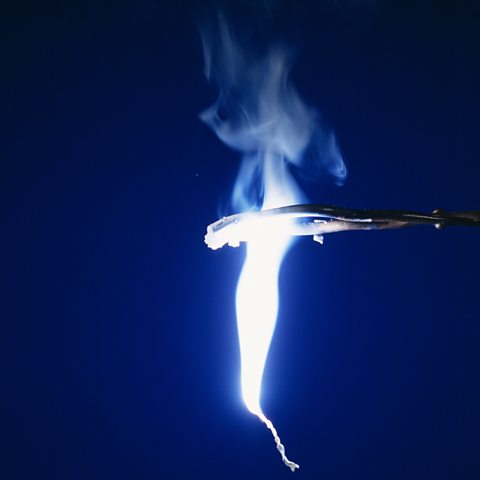
Working safely in the lab
Magnesium reacts with oxygen, resulting in a very bright light as it burns.
The light is so bright that it can even damage your eyes!

This bright light is a very unusual risk.
Can you think of how we might reduce this risk?
The risk can be reduced by viewing the reaction through a special welding mask which has a very dark filter. This protects our eyes from the bright light.
The oxidation reaction is also incredibly hot, so it can cause serious burns.
How might scientists reduce the risk of burns in this experiment?
The magnesium is held using tongs to prevent burns. This can be seen in the image above.
Read more about working safely in the lab in this guide.
Test your knowledge
Quiz
Play the Atomic Labs game! gamePlay the Atomic Labs game!
Try out practical experiments in this KS3 science game.

More on Chemical reactions
Find out more by working through a topic
- count3 of 12
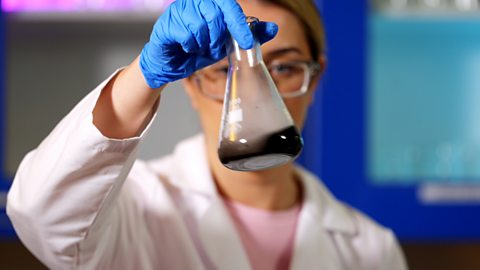
- count4 of 12
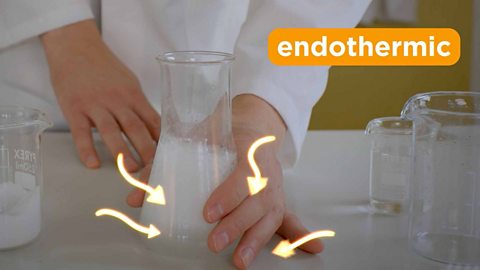
- count5 of 12
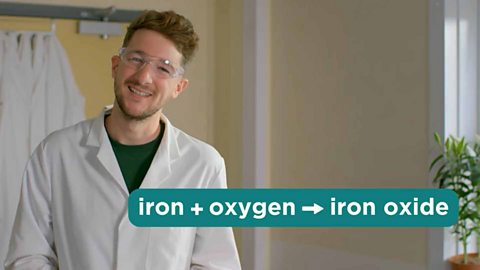
- count6 of 12
